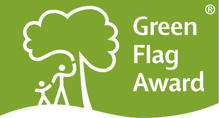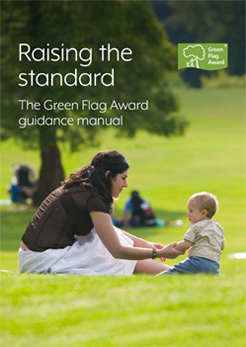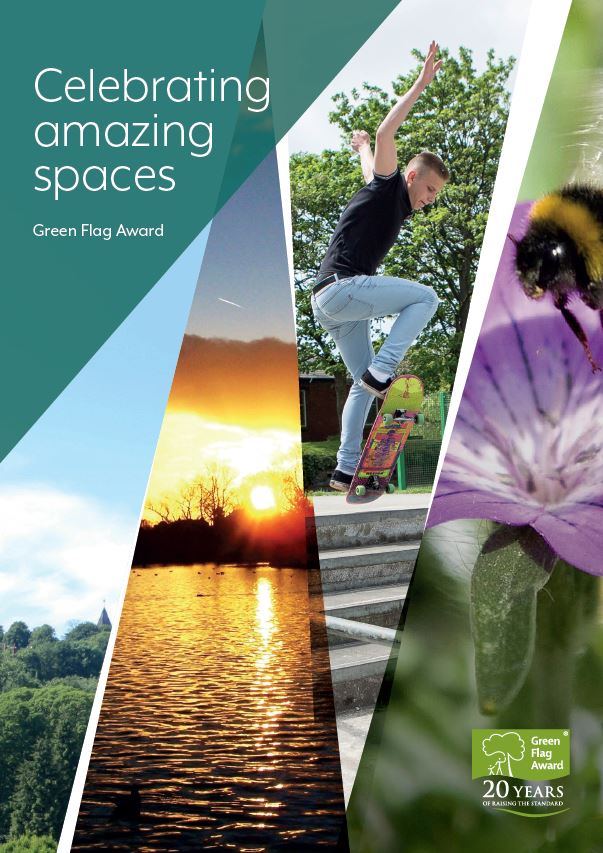Section 1: A welcoming Place
This section recognises the culmination of everything done well. A welcoming place is one that invites and draws people into it. This means creating a space which, through its visual appearance, range of facilities, standards of maintenance and ease of access, makes people feel that they are in a cared-for place.
- Welcome
- Good and Safe Access
- Signage
- Equal Access for All
Section 2: Healthy, Safe and Secure
This section looks at how well managers understand their users’ needs, encouraging them to enjoy healthy activities using appropriate, safe-to-use facilities and activities, and to feel personally safe and secure.
- Appropriate Provision of Quality Facilities and Activities
- Safe Equipment and Facilities
- Personal Security
- Control of Dogs/Dog Fouling
Section 3: Well Maintained and Clean
For aesthetic as well as health and safety reasons, issues of cleanliness and
maintenance must be addressed, in particular:
+ litter and other waste management issues must be adequately dealt with;
+ grounds, buildings, equipment and other features must be well maintained;
+ policies on litter, vandalism and maintenance should be in place, in practice, and regularly reviewed.
- Litter and Waste Management
- Horticultural Maintenance
- Arboricultural Maintenance
- Building and Infrastructure Maintenance
- Equipment Maintenance
Section 4: Environmental Management
This section seeks to ensure that the way the site is managed has a positive impact on the environment, locally and globally, both now and for the future. Where choices can be made for future procurement, landscaping or buildings, they should aim to minimise energy and resource consumption and waste, and design in benefits to the local and global environment. Policies should seek to eliminate the use of peat and chemicals to control pests and as fertilisers. Horticultural and arboricultural decisions should reflect an understanding of the impacts of climate change.
- Managing Environmental Impact
- Waste Minimisation
- Chemical Use
- Peat Use
- Climate Change Adaption Strategies
Section 5: Biodiversity, Landscape and Heritage
Attention should be paid to the appropriate management and conservation of natural
features, wildlife and flora; landscape features; and buildings and structures. Their particular character and requirements should be identified and appropriate management strategies put in place to conserve and enhance them.
- Management of Natural Features, Wild Fauna and Flora
- Conservation of Landscape Features
- Conservation of Buildings and Structures
Section 6: Community Involvement
This section examines the extent to which the managing organisation:
+ understands the community it seeks to serve;
+ actively and appropriately involves members of the community in making decisions about the site’s development;
+ provides opportunities for active participation in site projects; and
+ ensures that there is appropriate provision of recreational facilities and activities for all sectors of the community.
- Community Involvement in Management and Development
- Appropriate Provision for Community
Section 7: Marketing and Communication
This section seeks to examine the ways that managers understand the key benefits of the site and how they use this information to promote it appropriately. They should understand who the main user groups are, could be or should be, and use a fitting range of interpretation and engagement techniques to communicate with them. This basis ensures that appropriate facilities, events and activities can be offered and most effectively promoted, and forms a solid foundation for development now and in the future.
- Marketing and Promotion
- Appropriate Information Channels
- Appropriate Educational and Interpretational Information
Section 8: Management
This section evaluates how well the management plan is implemented on site.
- Implementation of Management Plan






